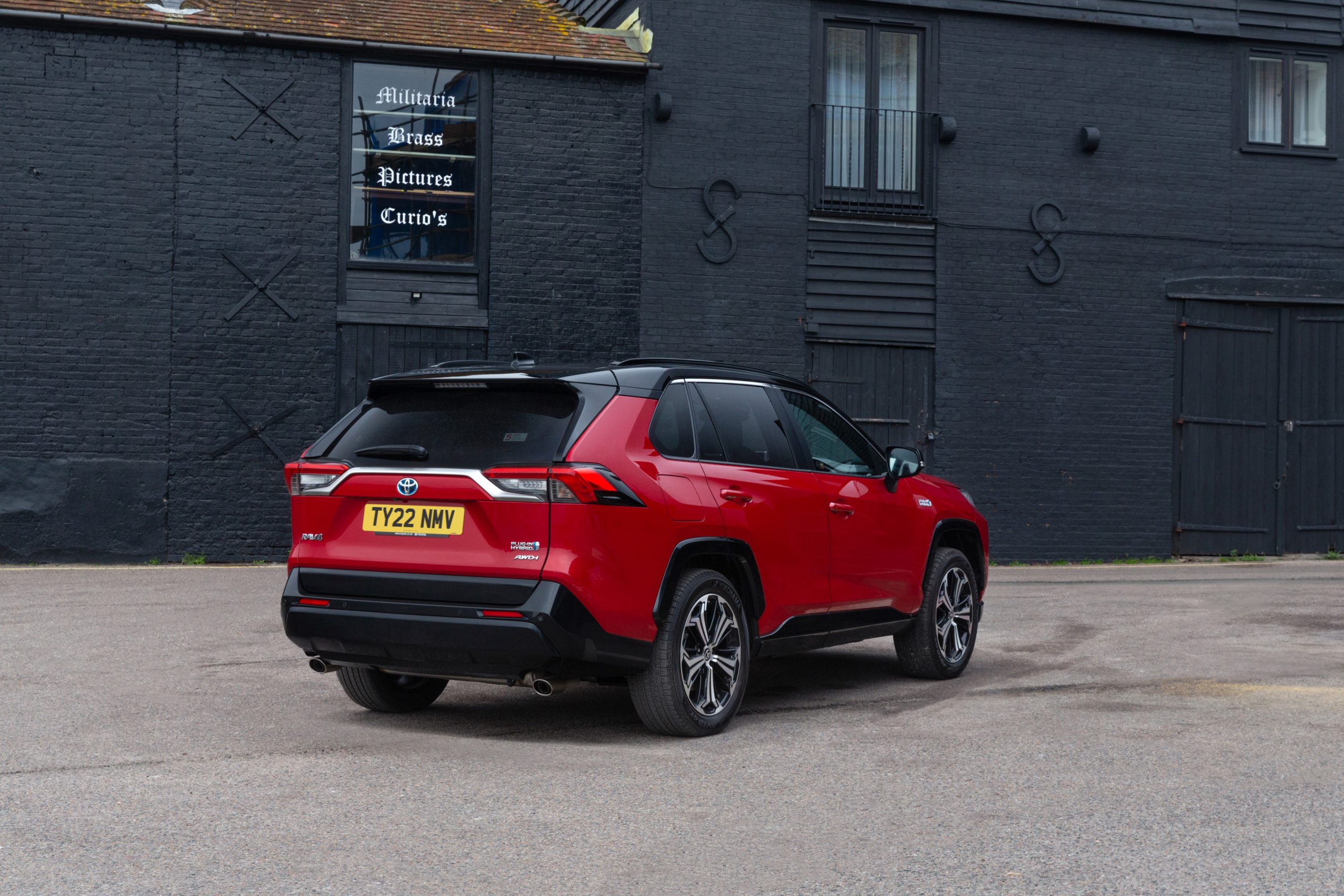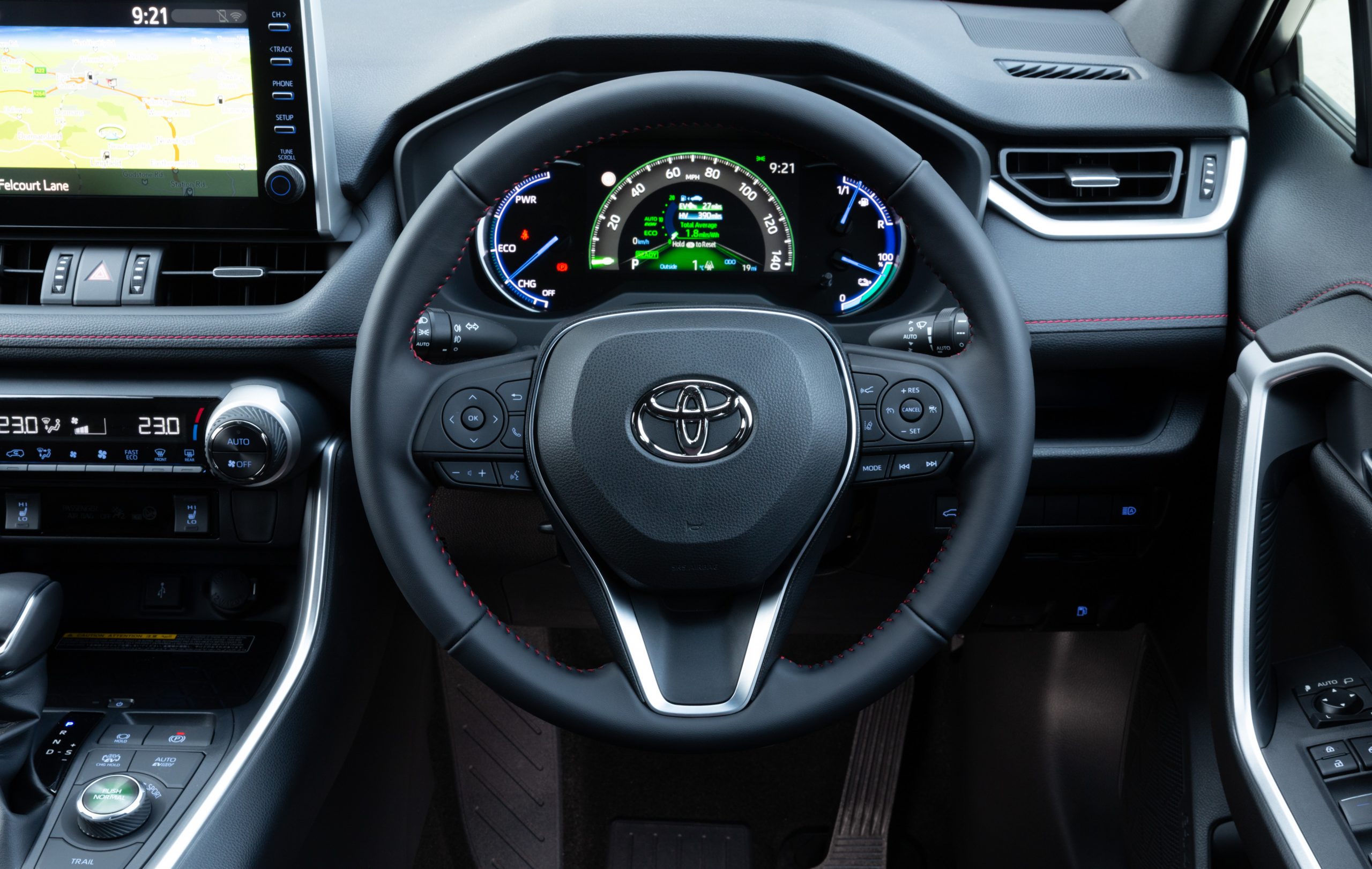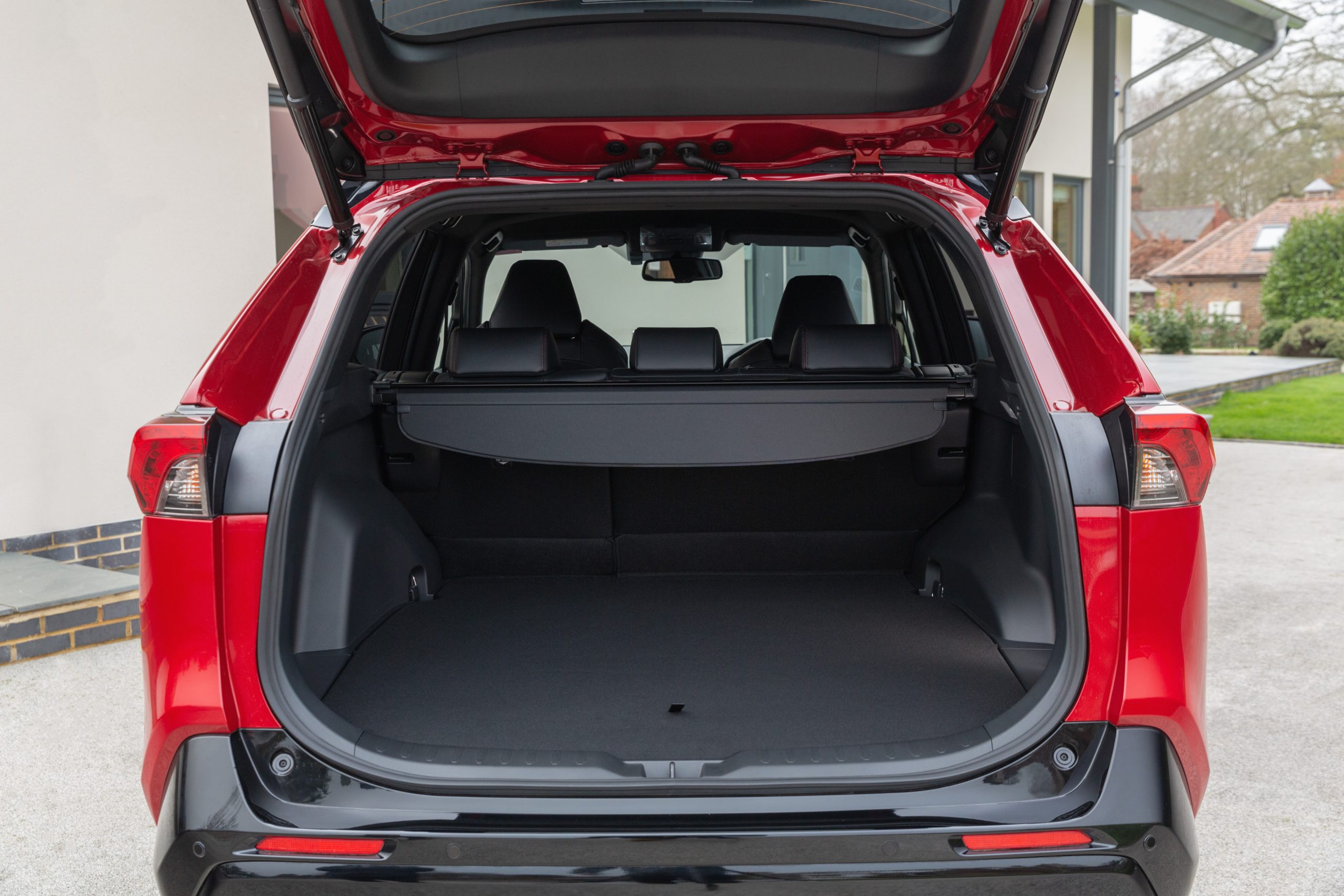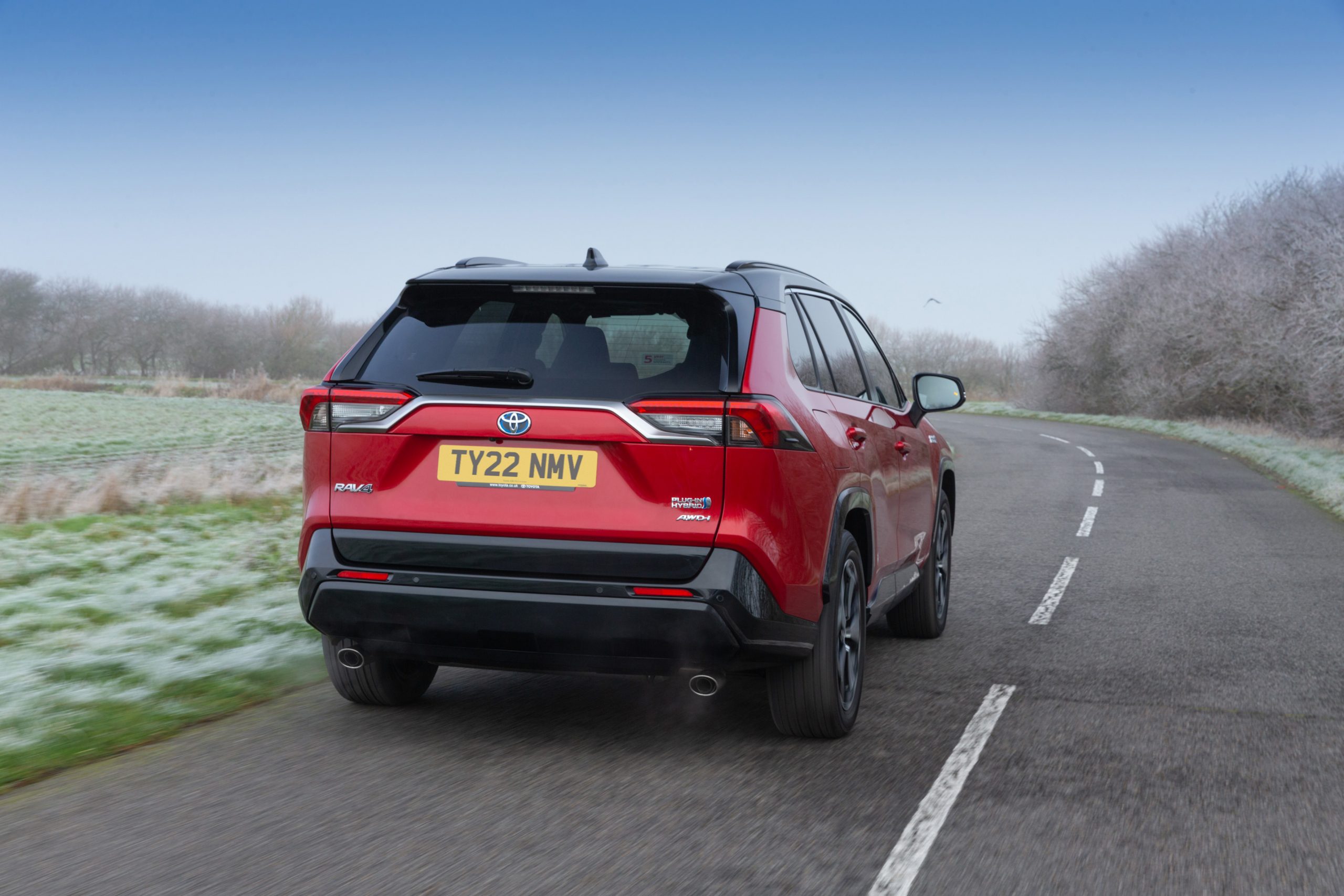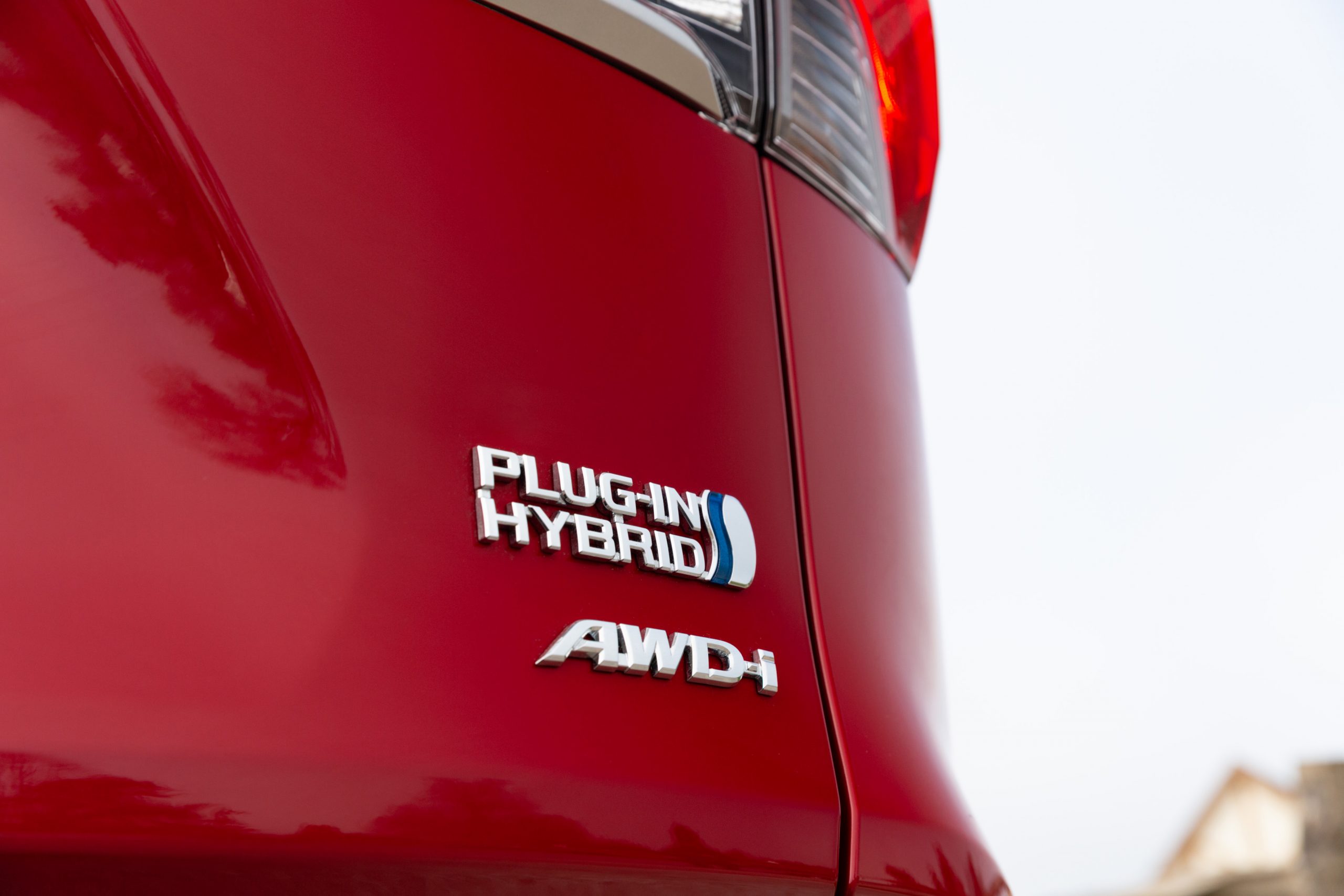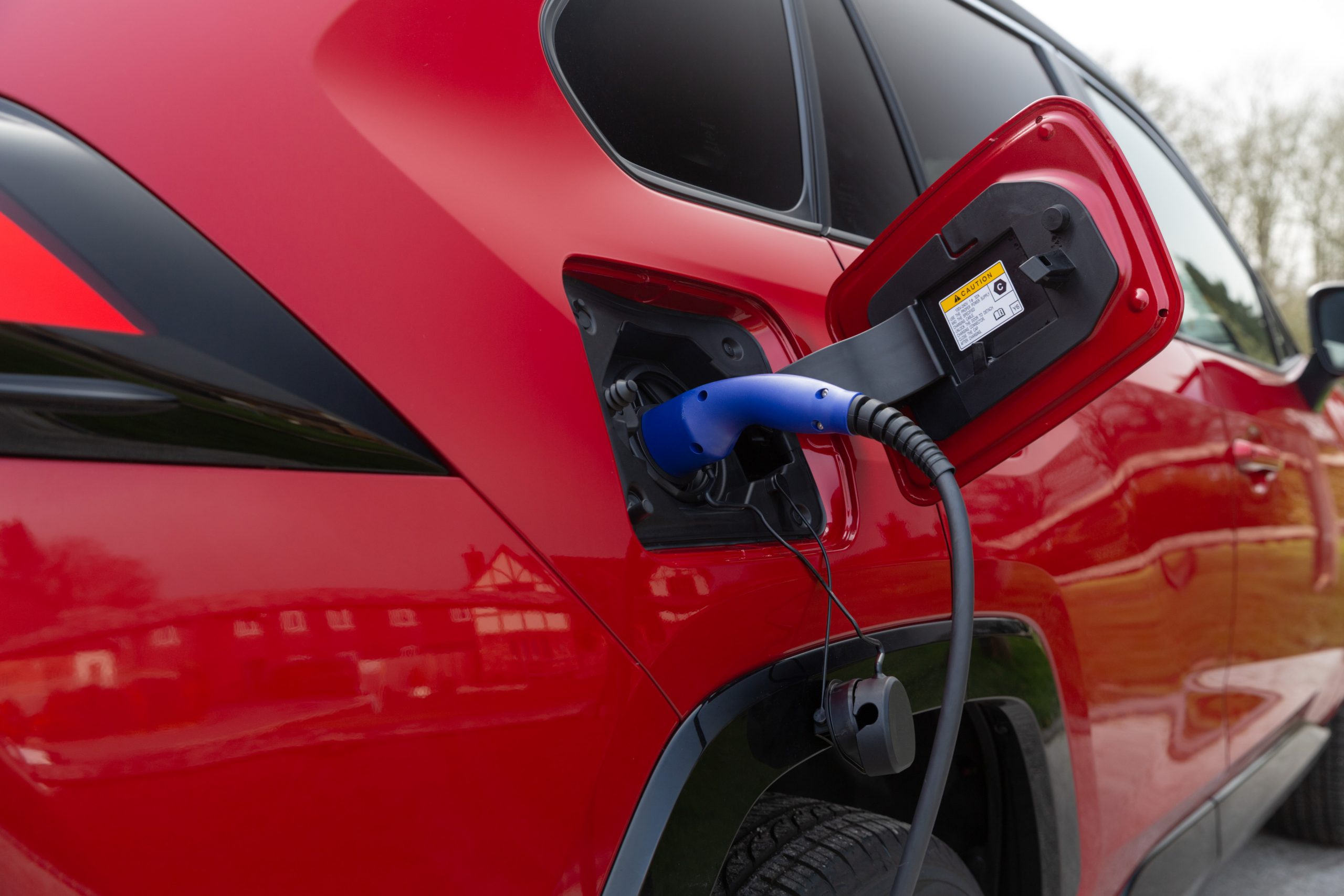Toyota RAV4 PHEV battery, range and charging
Key to getting the RAV4 over a crucial benefit-in-kind threshold to make it attractive to company car drivers is the all-electric range. This car should manage up to 46-miles on the standard official WLTP cycle, which is a decent amount - certainly covering off most of those smaller, regular journeys even factoring in that in the real-world those range figures will drop. It’s a useful amount more than most of the competition, so you should be using the petrol engine and having to plug in less.
You get that chunky EV-only distance thanks mainly to the old adage that bigger is better: the RAV-with-a-plug gets a much bigger battery than usual for a PHEV at 18.1kWH. That electricity pushes through a pair of motors that sit on each axle giving all-wheel drive - an arrangement you see on most of the more powerful pure electric cars. That 4x4 capability will also be good news when it snows or you try and get out of a muddy festival car park.
There’s a 2.5-litre four-cylinder petrol engine too, and even though that sounds big, it’s been set up for efficiency rather than speed so will actually be more economical than a smaller conventional engine. And when the battery runs out of juice, the RAV just defaults to being a traditional hybrid like any other Toyota.
Which also means it should stay marginally more efficient even if you don’t plug it in as much as you should.
Now because the RAV PHEV doesn’t do - ahem - ‘self-charging’ you have to plug it in to get the best out of it. And if you do, you’ll get a full battery in seven and a half hours on a three-pin plug, or two and a half on a home wallbox.
Toyota RAV4 PHEV performance
Even though the RAV PHEV sounds like it’s all set up to be saintly and efficient, it has a naughty side: with a combined system output of 302bhp, it gets to 62mph in just over six seconds. That’s… very nippy. If you consider that the VW Golf GTi manages the same sprint in roughly the same time… you might start to realise how surprising you can be at traffic lights.
Is it like that Golf GTI to drive too? Er, no. It’s quick, and competent, but not particularly exciting.There are three modes that basically vary the throttle response - Eco, Normal and Sport - the usual stuff, and four modes for the drivetrain - EV mode, Auto EV/Hybrid, Hybrid, and Charging.
The RAV always starts in EV mode and will continue to be electric until the battery exhausts itself - and can run up to 84mph. Even if you push the throttle all the way to the carpet it stays in EV.
Auto EV/Hybrid will try and run as much EV as possible, but pokes the engine into life when there’s high power demand, dipping back to EV immediately. Hybrid mode uses a bit of engine and a bit of battery to be most efficient, and charging will pump up the battery using the engine as a generator to use later. So if you’re heading into town, you can build up some electricity to use when you are in the traffic.
There’s also a ‘Trail’ mode if you want to tackle a muddy field, as it maximises traction. The RAV4 PHEV will also tow a tonne and a half braked trailer. That’s a reasonable sized caravan if you are so inclined.
The pulling power is really useful for smooth starts when towing, and the four-wheel-drive will mean you won’t get stuck on the campsite when you drive though the muddy patch caused by that leaky loo in the caravan next door.
And as for the rest of it? Well, the steering and brakes are precise enough, You can give yourself some engine-braking and re-gen via the paddles behind the wheel. There’s a bit of bodyroll, but let’s face it, we all have a bit of that. And yes, it’s fast, but it’s not exactly a sportscar when you go around a bend. Good enough, just not exciting.
One thing that really impresses though, is how quiet the RAV is running in EV mode. There’s special thick acoustic glass up front, and special wheelarch linings that suck out some of the noise from the wheels. You want attention to detail? The teeth on the gears in the gearbox are actually polished to make them smoother and quieter.
Toyota RAV4 PHEV practicality
Up front there are really very nice PHEV-only seats, and some bold shapes, though I’d say it was clean and contemporary rather than showstopping. And the user interfaces are similar: OK, but nothing to write home about, and the graphics for the 9-inch touchscreen aren’t exactly the slickest I’ve seen. It is comfy though. You could drive this all day and not have a problem, and the seats are easy to find a decent driving position in no matter your preference - the sort of thing that matters day-to-day.
There’s plenty of space in the rear seats and a big boot - and even though that floor is 35mm higher than the non-plug-in versions, it’s not enough to make a big difference.
Toyota RAV4 PHEV Costs and efficiency
The RAV4 PHEV line up has been cut down to just one model for the 2024 model year – called the GR Sport. Which seems a strange name for a very unsporty SUV, but we don’t work in marketing. It costs £48,990, which is far from cheap. A top-of-the-range Ford Kuga PHEV is £40,155, for example.
But the efficiency figures are crucial on a car like this, not just because they could try and offset that high purchase price: 22g/km of CO2 and 282 mpg - according to the complicated and unachievable lab equations - means 8% benefit-in-kind tax if this is a company car.
The resulting savings will run to thousands every year if you are a higher rate tax payer and swapping from a diesel.
The RAV gets a five-year/100,000-mile Toyota new vehicle warranty too, with 15-year cover for the hybrid system, as long as the official servicing schedule is maintained.
Private motorists will need to bear in mind that the list price is comfortably over £40,000 though, so you’ll be stung for extra road tax until the car is six years old.
Toyota RAV4 PHEV Verdict
Overall this is a solid bit of engineering, which drives well and is practical. It’s a good car, but you’ll have to do the groundwork figuring out where the tax breaks and incentives sit for you.
The problem the RAV plug-in has is that there are some really appealing pure electric crossovers out there now - and many compete on cost. They will be even cheaper as company cars if you can make them work for you.











